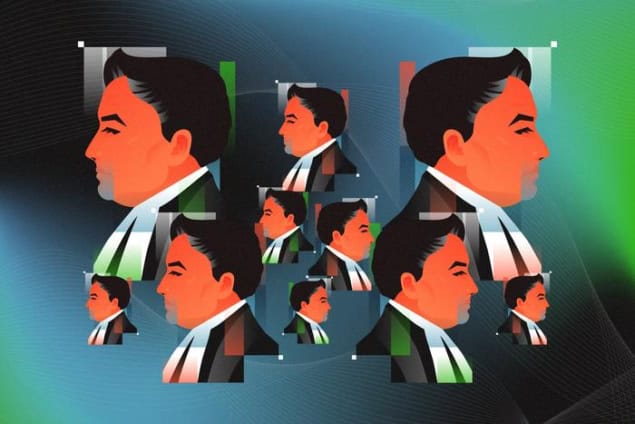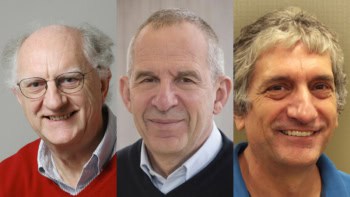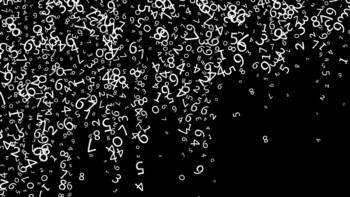
How would Bayes’ rule – a technique to calculate probabilities – work in the quantum world? Physicists at the National University of Singapore, Japan’s University of Nagoya, and the Hong Kong University of Science and Technology in Guangzhou have now put forward a possible explanation. Their work could help improve quantum machine learning and quantum error correction in quantum computing.
Bayes’ rule is named after Thomas Bayes who first defined it for conditional probabilities in “An Essay Towards Solving a Problem in the Doctrine of Chances” in 1763. It describes the probability of an event based on prior knowledge of conditions that might be related to the event. One area in which it is routinely used is to update beliefs based on new evidence (data). In classical statistics, the rule can be derived from the principle of minimum change, meaning that the updated beliefs must be consistent with the new data while only minimally deviating from the previous belief.
In mathematical terms, the principle of minimum change minimizes the distance between the joint probability distributions of the initial and updated belief. Simply put, this is the idea that for any new piece of information, beliefs are updated in the smallest possible way that is compatible with the new facts. For example, when a person tests positive for Covid-19, they may have suspected that they were ill, but the new information confirms this. Bayes’ rule is a therefore way to calculate the probability of having contracted Covid-19 based not only on the test result, and the chance of the test yielding a false negative, but also on the patient’s initial suspicions.
Quantum analogue
Quantum versions of Bayes’ rule have been around for decades, but the approach through the minimum change principle had not been tried before. In the new work, a team led by Ge Bai, Francesco Buscemi and Valerio Scarani set out to do just that.
“We found which quantum Bayes’ rule is singled out when one maximizes the fidelity (which is equivalent to minimizing the change) between two processes,” explains Bai. “In many cases, the solution is the ‘Petz recovery map’, proposed by Dénes Petz in the 1980s and which was already considered as being one of the best candidates for the quantum Bayes’ rule. It is based on the rules of information processing, crucial not only for human reasoning, but also for machine learning models that update their parameters with new data.”
Quantum theory is counter-intuitive, and the mathematics is hard, says Bai. “Our work provides a mathematically sound way to update knowledge about a quantum system, rigorously derived from simple principles of reasoning, he tells Physics World. “It demonstrates that the mathematical description of a quantum system—the density matrix—is not just a predictive tool, but is genuinely useful for representing our understanding of an underlying system. “It effectively extends the concept of gaining knowledge, which mathematically corresponds to a change in probabilities, into the quantum realm.”
A conservative stance
The “simple principles of reasoning” encompass the minimum change principle, adds Buscemi. “The idea is that while new data should lead us to update our opinion or belief about something, the change should be as small as possible, given the data received.
“It’s a conservative stance of sorts: I’m willing to change my mind, but only by the amount necessary to accept the hard facts presented to me, no more.”
“This is the simple (yet powerful) principle that Ge mentioned,” he says, “and it guides scientific inference by preventing unwanted biases from entering the reasoning process.”
An axiomatic approach to the Petz recovery map
While several quantum versions of the Bayes’ rule have been put forward before now, these were mostly based on the fact of having analogous properties to their classical counterpart, adds Scarani. “Recently, Francesco and one co-author proposed an axiomatic approach to the most frequently-used quantum Bayes rule, the one using the Petz recovery map. Our work is the first to derive a quantum Bayes rule from an optimization principle, which works very generally for classical information, but which has been used here for the first time in quantum information.

Deep Bayesian experimental design characterizes large-scale quantum systems
The result is very intriguing, he says: “we recover the Petz map in many cases, but not all. If we take that our new approach is the correct way to define a quantum Bayes rule, then previous constructions based on analogies were correct very often, but not quite always; and one or more of the axioms are not to be enforced after all. Our work is therefore is a major advance, but it is not the end of the road – and this is nice.”
Indeed, the researchers say they are now busy further refining their quantum Bayes’ rule. They are also looking into applications for it. “Beyond machine learning, this rule could be powerful for inference—not just for predicting the future but also retrodicting the past,” says Bai. “This is directly applicable to problems in quantum communication, where one must recover encoded messages, and in quantum tomography, where the goal is to infer a system’s internal state from observations.
“We will be using our results to develop new, hopefully more efficient, and mathematically well-founded methods for these tasks,” he concludes.
The present study is detailed in Physical Review Letters.



